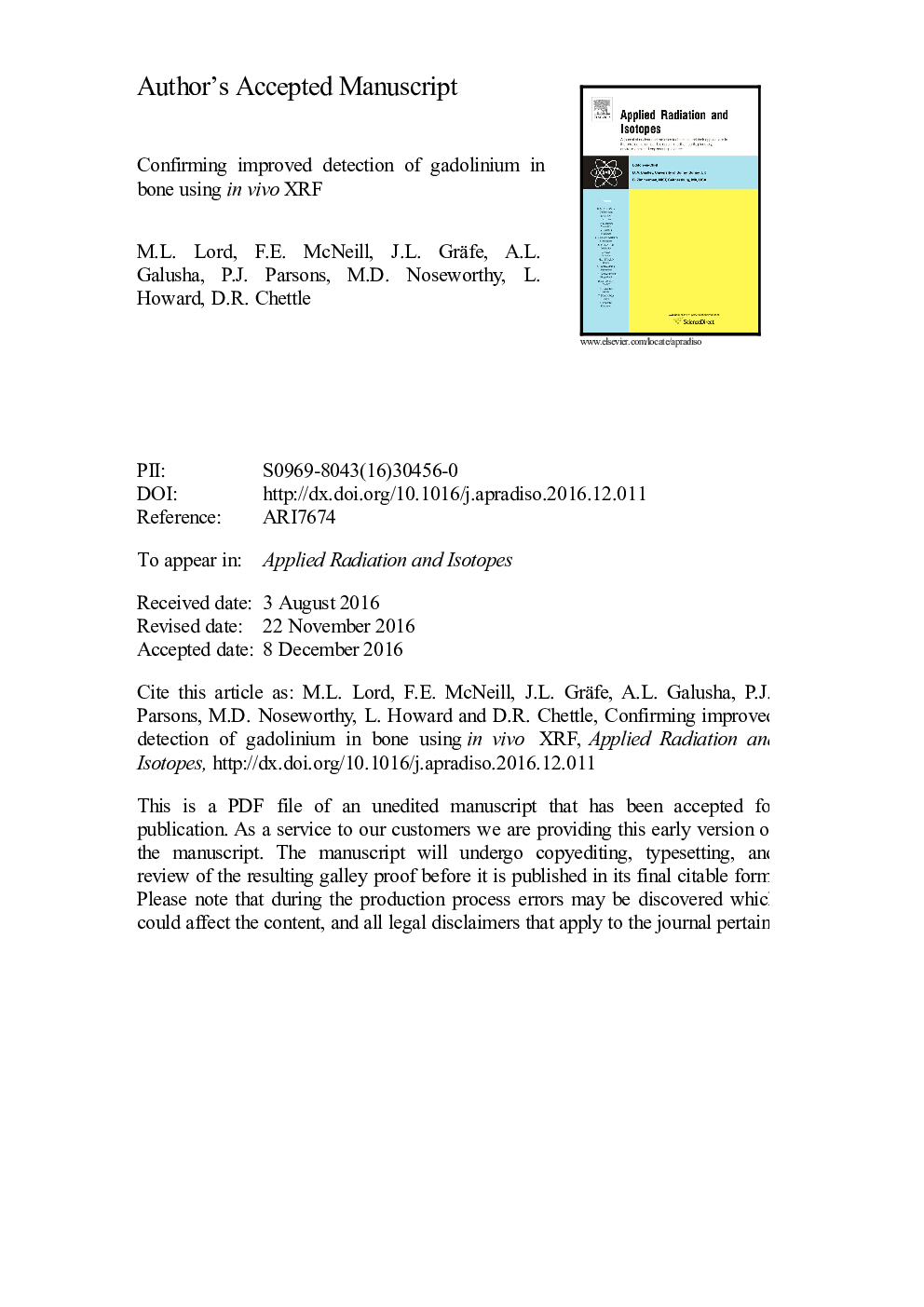| Article ID | Journal | Published Year | Pages | File Type |
|---|---|---|---|---|
| 5497785 | Applied Radiation and Isotopes | 2017 | 22 Pages |
Abstract
The safety of using Gd in MRI contrast agents has recently been questioned, due to recent evidence of the retention of Gd in individuals with healthy renal function. Bone has proven to be a storage site for Gd, as unusually high concentrations have been measured in femoral heads of patients undergoing hip replacement surgery, as well as in autopsy samples. All previous measurements of Gd in bone have been invasive and required the bone to be removed from the body. X-ray fluorescence (XRF) offers a non-invasive and non-destructive method for carrying out in vivo measurements of Gd in humans. An updated XRF system provides improved detection limits in a short measurement time of 30-min. A new four-detector system and higher activity Cd-109 excitation source of 5 GBq results in minimum detection limits (MDLs) of 1.64-1.72 μg Gd/g plaster for an average overlaying tissue thickness of the tibia. These levels are well within the range of previous in vitro Gd measurements. Additional validation through comparison with ICP-MS measurements has confirmed the ability of the XRF system for detecting Gd further, proving it is a feasible system to carry out human measurements.
Keywords
Related Topics
Physical Sciences and Engineering
Physics and Astronomy
Radiation
Authors
M.L. Lord, F.E. McNeill, J.L. Gräfe, A.L. Galusha, P.J. Parsons, M.D. Noseworthy, L. Howard, D.R. Chettle,
